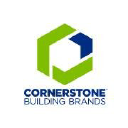/ factorpad.com / stocks / f26dzd.html
An ad-free and cookie-free website.
Our quantitative data points are meant to provide a high-level understanding of factors in equity risk models for Cornerstone Building Brands. Portfolio managers use these models to forecast risk, optimize portfolios and review performance.
We show how CNR stock compares to 2,000+ US-based stocks, and to peers in the Manufacturing sector and Prefabricated Metal Building and Component Manufacturing industry.
Please do not consider this data as investment advice. Data is downloaded from sources we deem reliable, but errors may occur.
 Cornerstone Building Brands is the largest manufacturer of exterior building products for residential and low-rise non-residential buildings in North America. Headquartered in Cary, North Carolina, we serve residential and commercial customers across new construction and repair and remodel markets. As the #1 manufacturer of vinyl windows, vinyl siding, insulated metal panels, metal roofing and wall systems and metal accessories, Cornerstone Building Brands combines an expansive portfolio of strong brands and quality products with a broad multichannel distribution platform that includes approximately 20,000 employees at manufacturing, distribution and branch office locations throughout North America.
Cornerstone Building Brands is the largest manufacturer of exterior building products for residential and low-rise non-residential buildings in North America. Headquartered in Cary, North Carolina, we serve residential and commercial customers across new construction and repair and remodel markets. As the #1 manufacturer of vinyl windows, vinyl siding, insulated metal panels, metal roofing and wall systems and metal accessories, Cornerstone Building Brands combines an expansive portfolio of strong brands and quality products with a broad multichannel distribution platform that includes approximately 20,000 employees at manufacturing, distribution and branch office locations throughout North America.
Many of the following risk metrics are standardized and transformed into quantitative factors in institutional-level risk models.
Rankings below represent percentiles from 1 to 100, with 1 being the lowest rating of risk.
Stocks with higher beta exhibit higher sensitivity to the ups and downs in the market. (↑↑)
Stocks with higher market capitalization often have lower risk. (↑↓)
Higher average daily dollar volume over the past 30 days implies lower liquidity risk. (↑↓)
Higher price momentum stocks, aka recent winners, equate to lower risk for many investors. (↑↓)
Style risk factors often include measures of profitability and payout levels.
Companies with higher earnings generally provide lower risk. (↑↓)
Companies with higher dividend yields, if sustaintable, are perceived to have lower risk. (↑↓)
/ factorpad.com / stocks / f26dzd.html
A newly-updated free resource. Connect and refer a friend today.